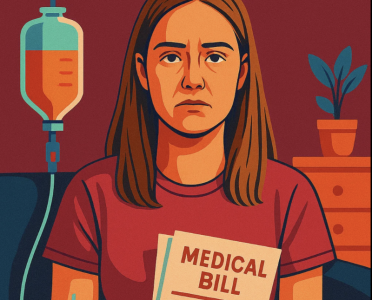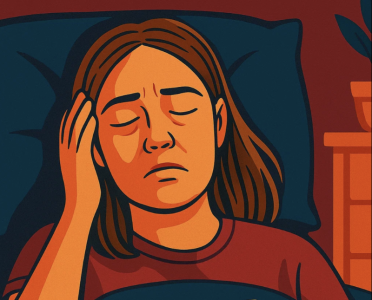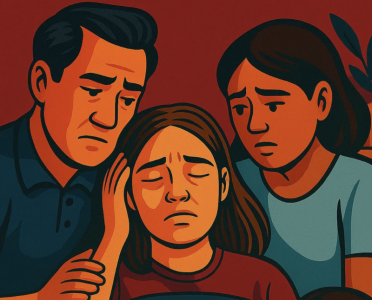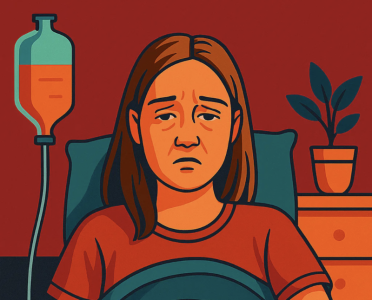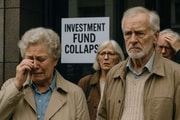Rising Medical Bills, Elusive Support: When Healthcare Costs and Disability Support Collide in Australia
- Replies 15
Australians with disabilities or serious health conditions are facing a dual crisis: the cost of healthcare is climbing, even as the safety net meant to support them, chiefly via Centrelink’s Disability Support Pension (DSP), remains difficult to access. Out-of-pocket medical expenses have been hitting record highs, and many who are too unwell to work find themselves denied or delayed in receiving DSP or other benefits.
The result is often financial distress and worsening health. This issue has been thrust into the spotlight by cases like a recent one involving a young woman facing hefty medical bills yet rejected by Centrelink for support. In this analysis, we explore how rising healthcare costs intersect with the challenges of accessing disability support in Australia, highlighting systemic barriers (stringent eligibility rules, bureaucratic delays, inconsistent decisions) and the broader social impact. The goal is to inform and engage Australians, including those over 60, about why this matters and what might be done.
A June 2025 Grattan Institute report found that one in ten Australians spends almost $600 a year on specialist appointments, and about 1 million people a year are delaying or skipping specialist consultations due to cost. In some fields, fees have soared well above what Medicare covers – for example, the average out-of-pocket fee for an initial psychiatrist visit reached $671 in 2023, with certain specialists charging more than triple the official Medicare fee.
These rising expenses hit vulnerable groups hardest. Dr. Nicole Higgins, President of the Royal Australian College of GPs, noted that higher out-of-pocket costs particularly affect patients with complex or chronic conditions who need longer and more frequent visits. When people can’t afford care, they often delay treatments or forgo medications, which can lead to their conditions worsening. Indeed, experts warn that unaffordable specialist fees result in patients’ illnesses progressing to the point of requiring hospitalisation, creating even bigger health and cost problems down the line.
In short, the cost-of-living crisis in healthcare means those who are already ill or disabled face a Catch-22: they need medical care to maintain their health, but paying for that care can strain or exceed their modest budgets, especially if they are not receiving adequate support.
Just ask Madeline Lebski, a former business owner who was healthy, active, and financially independent—until illness turned her life upside down. At 27, she was living in Byron Bay and running her own perfume business. Then she started feeling unusually fatigued. What she thought might be burnout or a virus eventually spiralled into a complex health collapse that left her bedridden for years.
'I took a month off, and didn’t get out of bed for five years,' she said. Her eventual diagnoses—chronic fatigue and mast cell activation syndrome (MCAS)—explained the brain fog, daily pain, and debilitating fatigue. But they didn’t make navigating the health system, or affording it, any easier.
Over several years, Medicare barely touched the costs of the dozens of specialists, tests, and treatments she needed. Madeline poured her savings into her health. She even sold her business for $80,000 just to stay afloat—money that lasted about 18 months. But when that ran out and she still wasn’t well enough to work, she turned to Centrelink for support.
Instead, she hit a brick wall.
Centrelink rejected her application—not because she wasn’t sick, but because she was living with her partner, who earned $60,000 a year. 'I remember just breaking down on the phone,' she recalled. 'They were like, "It’s too bad, there’s nothing we can do".'
Sixty thousand dollars might sound like a decent wage, but when one partner is unable to earn anything and requires frequent $600-a-pop specialist visits, it doesn’t go far. In the end, Madeline’s parents—both in their early 70s—had to dip into their retirement savings and even their super to help her survive. 'They’ve worked incredibly hard… this is the period of life where they should be able to enjoy that,' she said.
In a desperate bid to qualify for support, Madeline even enrolled in a $5,000 graphic design course just to meet Centrelink's study requirements. It worked—temporarily. She received some income support for a short time, but was later left with a $5,000 debt and questioned whether the whole ordeal had been worth it.
All told, her family spent well over six figures to help her manage her condition. And while she now works part-time and is on a path to recovery, the financial, physical, and emotional toll was immense. 'In another life, I would have hoped that selling my business would have helped me buy a home,' she said. 'Instead, we rent and have a housemate to help cover the costs.'
She’s far from alone. Others with substantial medical expenses have reported being denied various Centrelink payments due to strict criteria or technicalities, forcing them to rely on family, charity or personal debt to stay afloat.
Many Australians with serious health conditions struggle to access timely support through Centrelink. These scenarios underscore the intersection of healthcare costs and support: when someone gets sick or injured, their expenses shoot up at the very moment their earning ability collapses. That is precisely when government assistance is supposed to help – yet many find they can’t access it, or not without a protracted fight.
The sum effect of these challenges is that many Australians with significant disabilities or health issues struggle to obtain the support that, on paper, is meant for them. The system’s strict gatekeeping (to prevent ineligible claims) can end up excluding a lot of genuinely needy people. Those who are denied or stuck waiting often have no choice but to rely on family (if they’re lucky) or to exhaust any savings. Some attempt to return to work before they are medically ready, risking further injury, simply because they cannot survive on nothing for months. Others wind up on the lower JobSeeker benefit with requirements that may worsen their health. It’s a situation that disability advocates have long decried as untenable, calling for urgent reforms.
Source: Sky News Australia / Youtube.
One stark example is Chris, a man who shared his experience with Triple J’s Hack program. Chris has a mental health disability (complex PTSD) and applied for DSP in 2023. His assessment dragged on for 10 months with no outcome. During that time, he had virtually no income. 'A lot of bills fell behind – things like phone bill, water bill, power bill all just racked up,' he said. To get by, he skipped meals and even rationed his medication, despite this obviously endangering his health. At one point, he recalls, 'there was not enough money in the bank' to buy essential medicine or pay for appointments. His young son innocently asked if they had money to buy milk that day – 'The worst part was the answer to his question was no,' Chris said. In his case, things reached a crisis: the family’s mortgage fell into arrears, and the bank was on the verge of foreclosing on their home. It was only after a local MP intervened on his behalf that his DSP claim was suddenly approved, literally days before he might have lost everything. Chris said that long period of waiting with no support left him 'hopeless', not knowing if he’d be able to feed his family or keep a roof over their heads. Sadly, his story is not an isolated one.
Poverty among those relying on disability and unemployment payments is a well-documented problem in Australia. The basic DSP rate (about $1,047 per fortnight for a single person) equates to roughly $74.79 a day. This is below the commonly used poverty line (for instance, the Henderson Poverty Line is around $87 per day for a single adult). In other words, even Australians lucky enough to get onto DSP are often surviving on an income that doesn’t meet fundamental living costs. Those on JobSeeker (around $55 a day) are in an even more dire position.
A recent Anglicare Australia report laid out the stark reality: 'Centrelink payments simply do not cover the costs of essentials, like food and rent. That means people are being forced to skip meals, avoid medical care, and cram their families into overcrowded homes.' Many end up going into debt to get through – 'some are being pushed into debt spirals just to keep up with everyday costs,' the report noted. This is the broader social impact of a system that provides inadequate support: it effectively traps people in poverty instead of helping them out of it.
The consequences ripple beyond individual households. When people forego medical treatment or medications because they can’t afford them, their health conditions often worsen, potentially leading to more intense (and expensive) interventions later on. There’s also a moral and social cost: leaving people with disabilities without support undermines social inclusion and dignity. As Dr. Goldie has observed, 'every day people with disability struggle to afford the basic essentials of life due to a system that does more to exclude them than support them' . She and other advocates describe the situation as a national shame – noting that Australia, as a wealthy country, has a duty to ensure its social security system provides people 'enough to cover essentials, including the extra costs that disability brings, and [that they are] treated with the respect and dignity they deserve.'
Failing to do so doesn’t just hurt those individuals; it erodes our values of fairness and compassion. It also places strain on charities, hospitals, and community services that often must pick up the pieces when government support falls short.
'Too many people with disability and chronic illness need the lifeline the DSP provides but don’t have access to it,' said People With Disability Australia president Marayke Jonkers, adding that the status quo leaves people 'without the financial resources necessary to live.' The advocates argue that urgent steps are needed: make the DSP more accessible, shorten the assessment times, ensure the criteria capture those who truly cannot work, and raise payment levels to at least the poverty line. There have also been calls to better integrate health and social services – for instance, providing interim financial aid for people going through long medical treatment or rehabilitation, so they aren’t penalised for conditions that might not be permanent.
For older Australians, many of whom came up in a time when the social safety net was perhaps easier to access, these stories are a poignant reminder of the importance of a fair system. Some readers in their 60s might themselves be on (or awaiting) the Age Pension, or know family members on disability support. They might recall times when getting a disability pension wasn’t as convoluted, or conversely, they might have firsthand experience with today’s hurdles. The takeaway is that serious illness or disability can happen to anyone, and society has a responsibility to ensure those struck by misfortune aren’t left destitute. As the cost of living – and specifically healthcare – continues to rise, this issue grows more pressing. Every Australian, young or old, benefits from a system that treats the vulnerable with justice and compassion, because it speaks to the kind of community we all live in.
In conclusion, the combination of skyrocketing medical costs and an overly restrictive disability support system is creating a perfect storm for many Australians in need. People like Ashleigh, forced to pay thousands for treatment with no income support, or like Chris, waiting interminably while his finances and health unravel, show us how the system can fail in practice. Yet, these are problems with solutions: policy changes, adequate funding, and a shift in mindset from suspicion to support. By reforming Centrelink processes and acknowledging the true expenses of living with a disability (especially healthcare costs), Australia can ease the burden on those who are suffering. For an older Australian audience, this isn’t just an abstract policy debate – it’s about ensuring that if it were you or your loved one facing a health crisis, the safety net would be there to catch you. As one report lamented,
'It has never been harder to live on [Centrelink] payments, with living costs spiralling', and payments 'too low for too long, trapping people in poverty instead of helping them escape it.' Fixing that will require willpower and empathy, but it’s essential if we want our most vulnerable citizens to live with dignity. The rising tide of medical costs makes it all the more urgent that disability support in Australia be accessible, adequate, and responsive – so that those knocked down by illness or disability are not left without a chair when the music stops.
As the cost of living rises and health challenges grow more complex, it’s worth asking: are we doing enough to ensure that no Australian is left behind when illness or disability strikes?
Read more: Rural residents shell out more for health services as hidden costs emerge
The result is often financial distress and worsening health. This issue has been thrust into the spotlight by cases like a recent one involving a young woman facing hefty medical bills yet rejected by Centrelink for support. In this analysis, we explore how rising healthcare costs intersect with the challenges of accessing disability support in Australia, highlighting systemic barriers (stringent eligibility rules, bureaucratic delays, inconsistent decisions) and the broader social impact. The goal is to inform and engage Australians, including those over 60, about why this matters and what might be done.
Soaring Out-of-Pocket Healthcare Costs
An Australian Medicare card and banknotes–symbols of out-of-pocket medical costs. Healthcare in Australia might be subsidized by Medicare, but patients are paying more out of their own pockets than ever. The gap fee to see a general practitioner (GP) has risen to an average of $36.86 for a standard consult in 2024, up from about $34.91 the year before. This means many Australians (especially those with chronic illnesses requiring frequent or long appointments) are now routinely paying a significant sum each visit. Specialist doctor fees are even steeper.A June 2025 Grattan Institute report found that one in ten Australians spends almost $600 a year on specialist appointments, and about 1 million people a year are delaying or skipping specialist consultations due to cost. In some fields, fees have soared well above what Medicare covers – for example, the average out-of-pocket fee for an initial psychiatrist visit reached $671 in 2023, with certain specialists charging more than triple the official Medicare fee.
These rising expenses hit vulnerable groups hardest. Dr. Nicole Higgins, President of the Royal Australian College of GPs, noted that higher out-of-pocket costs particularly affect patients with complex or chronic conditions who need longer and more frequent visits. When people can’t afford care, they often delay treatments or forgo medications, which can lead to their conditions worsening. Indeed, experts warn that unaffordable specialist fees result in patients’ illnesses progressing to the point of requiring hospitalisation, creating even bigger health and cost problems down the line.
In short, the cost-of-living crisis in healthcare means those who are already ill or disabled face a Catch-22: they need medical care to maintain their health, but paying for that care can strain or exceed their modest budgets, especially if they are not receiving adequate support.
Medical Bills and the Quest for Support
For Australians coping with serious health issues, high medical bills can quickly become unmanageable – and that’s when government support should step in. Unfortunately, accessing Centrelink support like the DSP isn’t always straightforward. A widely reported recent case illustrates the predicament.Just ask Madeline Lebski, a former business owner who was healthy, active, and financially independent—until illness turned her life upside down. At 27, she was living in Byron Bay and running her own perfume business. Then she started feeling unusually fatigued. What she thought might be burnout or a virus eventually spiralled into a complex health collapse that left her bedridden for years.
'I took a month off, and didn’t get out of bed for five years,' she said. Her eventual diagnoses—chronic fatigue and mast cell activation syndrome (MCAS)—explained the brain fog, daily pain, and debilitating fatigue. But they didn’t make navigating the health system, or affording it, any easier.
Over several years, Medicare barely touched the costs of the dozens of specialists, tests, and treatments she needed. Madeline poured her savings into her health. She even sold her business for $80,000 just to stay afloat—money that lasted about 18 months. But when that ran out and she still wasn’t well enough to work, she turned to Centrelink for support.
Instead, she hit a brick wall.
Centrelink rejected her application—not because she wasn’t sick, but because she was living with her partner, who earned $60,000 a year. 'I remember just breaking down on the phone,' she recalled. 'They were like, "It’s too bad, there’s nothing we can do".'
Sixty thousand dollars might sound like a decent wage, but when one partner is unable to earn anything and requires frequent $600-a-pop specialist visits, it doesn’t go far. In the end, Madeline’s parents—both in their early 70s—had to dip into their retirement savings and even their super to help her survive. 'They’ve worked incredibly hard… this is the period of life where they should be able to enjoy that,' she said.
In a desperate bid to qualify for support, Madeline even enrolled in a $5,000 graphic design course just to meet Centrelink's study requirements. It worked—temporarily. She received some income support for a short time, but was later left with a $5,000 debt and questioned whether the whole ordeal had been worth it.
All told, her family spent well over six figures to help her manage her condition. And while she now works part-time and is on a path to recovery, the financial, physical, and emotional toll was immense. 'In another life, I would have hoped that selling my business would have helped me buy a home,' she said. 'Instead, we rent and have a housemate to help cover the costs.'
She’s far from alone. Others with substantial medical expenses have reported being denied various Centrelink payments due to strict criteria or technicalities, forcing them to rely on family, charity or personal debt to stay afloat.
Many Australians with serious health conditions struggle to access timely support through Centrelink. These scenarios underscore the intersection of healthcare costs and support: when someone gets sick or injured, their expenses shoot up at the very moment their earning ability collapses. That is precisely when government assistance is supposed to help – yet many find they can’t access it, or not without a protracted fight.
Systemic Challenges in Accessing Disability Support
Why do so many people in need struggle to get the Disability Support Pension or similar assistance? Advocates and experts point to a range of systemic challenges in the Centrelink system. Some of the major barriers include:- Strict Eligibility Criteria: Qualifying for the DSP requires meeting onerous medical criteria. It’s not enough to be seriously ill or certified unfit for work by your doctor. Since 2012, Australia uses detailed Impairment Tables to assess applications, and a person’s condition must be 'fully diagnosed, treated and stabilised' – essentially permanent and unlikely to improve. You also need to score at least 20 points on these tables (which measure how much your impairment affects your ability to function). This means people with conditions that are debilitating but considered treatable or episodic can be ruled ineligible. For example, a woman suffering a rare cardiac syndrome causing blackouts was denied DSP repeatedly for four years – Centrelink insisted she could work up to 30 hours a week, despite five cardiologists deeming her unfit. The requirement that she prove 'permanent' incapacity left her in limbo: 'It has been h*** – I was just so desperate,' she said, describing how she tried to push herself to meet Centrelink’s work criteria, only to worsen her health. Advocates have savaged these eligibility rules, saying they 'lock' applicants into years of 'bureaucratic hell'.
- Long Delays and Backlogs: Even once someone submits a claim, getting an answer (let alone support) takes time. Average DSP processing times have blown out to 107 days (over 3 months) as of 2024, more than triple the wait from four years prior. Many applicants wait far longer. Those with certain conditions face especially long queues – people with chronic illnesses wait on average 135 days, and those with mental health disorders around 123 days, compared to about 50 days for applicants with cancer. Nearly 10,000 people have been stuck waiting more than 4 months for a DSP decision. These delays are not just numbers – during this time, individuals often have no income other than possibly a lower JobSeeker payment, and they may be unable to afford treatments or even rent. 'These are people who are genuinely in crisis,' one senator noted in concern, pressing the agency to speed up assessments. The government has hired more staff to try to clear the backlog, but for now, the long wait adds to the hardship when people are at their most vulnerable.
- High Rejection Rates: A very large proportion of DSP claims are denied. In the 2023–24 year, about 44% of DSP applications were rejected, one of the highest refusal rates of any payment. Advocates argue that many deserving people are being turned away under the stringent regime. Often, those rejected end up on JobSeeker (unemployment benefits) by default, which pays significantly less – roughly $55.57 per day on JobSeeker vs $74.79 on DSP – and comes with job search requirements that sick individuals can find impossible. This pushes disabled Australians onto a lower income that virtually guarantees poverty, unless they somehow appeal and get onto DSP later. It’s telling that a 2021 analysis found over 370,000 people shifted from DSP to JobSeeker in recent years, especially those with chronic illnesses or mental health conditions, suggesting the bar for DSP had been set very high. 'What we are seeing is a dramatic reduction in access to the DSP, effectively relegating people to unrelenting poverty,' said Ross Joyce, head of the Australian Federation of Disability Organisations.
- Inconsistent Decisions & Appeals: There is evidence that many initial rejections are overturned on appeal, which implies inconsistencies in how rules are applied. In fact, roughly 40% of people who challenge a DSP denial at the Administrative Appeals Tribunal succeed in having the decision reversed. Navigating the appeal process, however, can be arduous – it often requires legal help and detailed medical evidence, which not everyone can muster. Lawyers who assist claimants note that sometimes finding the right doctor who can phrase a report to match Centrelink’s criteria is crucial. 'It’s actually not based on your condition – it’s based on the impairments to your function… getting the medical evidence around that causes a lot of people to falter,' explained one disability law solicitor, regarding how technical the paperwork can be. This complexity means two individuals with similar health problems might get different outcomes depending on how well their forms are filled out or which assessor reviews them. It also leads to prolonged uncertainty – people might go through multiple appeals over months or years. As Dr. Cassandra Goldie of ACOSS (Australian Council of Social Service) put it, “a bureaucratic, stressful and impersonal claims process” is pushing many who seek DSP onto hardship and onto the inferior JobSeeker payment.
The sum effect of these challenges is that many Australians with significant disabilities or health issues struggle to obtain the support that, on paper, is meant for them. The system’s strict gatekeeping (to prevent ineligible claims) can end up excluding a lot of genuinely needy people. Those who are denied or stuck waiting often have no choice but to rely on family (if they’re lucky) or to exhaust any savings. Some attempt to return to work before they are medically ready, risking further injury, simply because they cannot survive on nothing for months. Others wind up on the lower JobSeeker benefit with requirements that may worsen their health. It’s a situation that disability advocates have long decried as untenable, calling for urgent reforms.
Source: Sky News Australia / Youtube.
The Human Toll: From Poverty to Health Consequences
These systemic flaws aren’t just bureaucratic—they have a very real human cost. Being sick or disabled in Australia without adequate support can rapidly lead to poverty, homelessness, and deteriorating health. By the time many people navigate the DSP process, they’ve been through a financial and emotional wringer.One stark example is Chris, a man who shared his experience with Triple J’s Hack program. Chris has a mental health disability (complex PTSD) and applied for DSP in 2023. His assessment dragged on for 10 months with no outcome. During that time, he had virtually no income. 'A lot of bills fell behind – things like phone bill, water bill, power bill all just racked up,' he said. To get by, he skipped meals and even rationed his medication, despite this obviously endangering his health. At one point, he recalls, 'there was not enough money in the bank' to buy essential medicine or pay for appointments. His young son innocently asked if they had money to buy milk that day – 'The worst part was the answer to his question was no,' Chris said. In his case, things reached a crisis: the family’s mortgage fell into arrears, and the bank was on the verge of foreclosing on their home. It was only after a local MP intervened on his behalf that his DSP claim was suddenly approved, literally days before he might have lost everything. Chris said that long period of waiting with no support left him 'hopeless', not knowing if he’d be able to feed his family or keep a roof over their heads. Sadly, his story is not an isolated one.
Poverty among those relying on disability and unemployment payments is a well-documented problem in Australia. The basic DSP rate (about $1,047 per fortnight for a single person) equates to roughly $74.79 a day. This is below the commonly used poverty line (for instance, the Henderson Poverty Line is around $87 per day for a single adult). In other words, even Australians lucky enough to get onto DSP are often surviving on an income that doesn’t meet fundamental living costs. Those on JobSeeker (around $55 a day) are in an even more dire position.
A recent Anglicare Australia report laid out the stark reality: 'Centrelink payments simply do not cover the costs of essentials, like food and rent. That means people are being forced to skip meals, avoid medical care, and cram their families into overcrowded homes.' Many end up going into debt to get through – 'some are being pushed into debt spirals just to keep up with everyday costs,' the report noted. This is the broader social impact of a system that provides inadequate support: it effectively traps people in poverty instead of helping them out of it.
The consequences ripple beyond individual households. When people forego medical treatment or medications because they can’t afford them, their health conditions often worsen, potentially leading to more intense (and expensive) interventions later on. There’s also a moral and social cost: leaving people with disabilities without support undermines social inclusion and dignity. As Dr. Goldie has observed, 'every day people with disability struggle to afford the basic essentials of life due to a system that does more to exclude them than support them' . She and other advocates describe the situation as a national shame – noting that Australia, as a wealthy country, has a duty to ensure its social security system provides people 'enough to cover essentials, including the extra costs that disability brings, and [that they are] treated with the respect and dignity they deserve.'
Failing to do so doesn’t just hurt those individuals; it erodes our values of fairness and compassion. It also places strain on charities, hospitals, and community services that often must pick up the pieces when government support falls short.
Calls for Change and Conclusion
The intersection of rising healthcare costs with an inaccessible disability support system has not gone unnoticed. There have been growing calls for reform from community groups, experts, and even parliamentary inquiries. In 2021, a Senate inquiry into the DSP heard 'overwhelming evidence' that the payment was inadequate and overly complex to obtain, leading to unfair outcomes. That inquiry made 30 recommendations to improve the system – from simplifying the application process and eligibility criteria to providing better support during waiting periods. However, progress has been slow. The federal government only formally responded to those recommendations in late 2024, and its response was widely criticised as 'lacklustre' and insufficient. A coalition of disability advocacy groups condemned the lack of concrete action, urging the government not to sweep this issue under the rug.'Too many people with disability and chronic illness need the lifeline the DSP provides but don’t have access to it,' said People With Disability Australia president Marayke Jonkers, adding that the status quo leaves people 'without the financial resources necessary to live.' The advocates argue that urgent steps are needed: make the DSP more accessible, shorten the assessment times, ensure the criteria capture those who truly cannot work, and raise payment levels to at least the poverty line. There have also been calls to better integrate health and social services – for instance, providing interim financial aid for people going through long medical treatment or rehabilitation, so they aren’t penalised for conditions that might not be permanent.
For older Australians, many of whom came up in a time when the social safety net was perhaps easier to access, these stories are a poignant reminder of the importance of a fair system. Some readers in their 60s might themselves be on (or awaiting) the Age Pension, or know family members on disability support. They might recall times when getting a disability pension wasn’t as convoluted, or conversely, they might have firsthand experience with today’s hurdles. The takeaway is that serious illness or disability can happen to anyone, and society has a responsibility to ensure those struck by misfortune aren’t left destitute. As the cost of living – and specifically healthcare – continues to rise, this issue grows more pressing. Every Australian, young or old, benefits from a system that treats the vulnerable with justice and compassion, because it speaks to the kind of community we all live in.
In conclusion, the combination of skyrocketing medical costs and an overly restrictive disability support system is creating a perfect storm for many Australians in need. People like Ashleigh, forced to pay thousands for treatment with no income support, or like Chris, waiting interminably while his finances and health unravel, show us how the system can fail in practice. Yet, these are problems with solutions: policy changes, adequate funding, and a shift in mindset from suspicion to support. By reforming Centrelink processes and acknowledging the true expenses of living with a disability (especially healthcare costs), Australia can ease the burden on those who are suffering. For an older Australian audience, this isn’t just an abstract policy debate – it’s about ensuring that if it were you or your loved one facing a health crisis, the safety net would be there to catch you. As one report lamented,
'It has never been harder to live on [Centrelink] payments, with living costs spiralling', and payments 'too low for too long, trapping people in poverty instead of helping them escape it.' Fixing that will require willpower and empathy, but it’s essential if we want our most vulnerable citizens to live with dignity. The rising tide of medical costs makes it all the more urgent that disability support in Australia be accessible, adequate, and responsive – so that those knocked down by illness or disability are not left without a chair when the music stops.
As the cost of living rises and health challenges grow more complex, it’s worth asking: are we doing enough to ensure that no Australian is left behind when illness or disability strikes?
Read more: Rural residents shell out more for health services as hidden costs emerge
Last edited:

